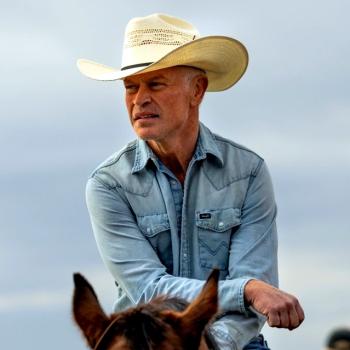Editors' Note: This article is part of the Patheos Public Square on the Future of Faith in America: Eastern Religions. Read other perspectives here.
There are approximately 700,000 Sikhs in the United States. On one hand many of them find it easy to practice their faith here because Sikh and American values are similar. "Sikhs, like Americans, believe in equality among all, freedom of religion, and social justice." Yet many still find it challenging to be fully accepted due to our visually distinct appearance of the turban, chuni (scarf), unshorn hair, and beard. Classroom bullying, institutional racism, and negative public perception all contribute to making life difficult, if not dangerous, at times for Sikh Americans.
Yet, the current 21st-century situation of Sikhs is much better than it used to be in decades past. To envisage the future of Sikhi (Sikhism) in America, it is essential to understand how the general public and government have historically interacted with those of the Sikh faith. Furthermore, Sikhi in American cannot be examined in isolation since, due to the fact that Sikhs predominantly hail from the Punjab region of India/Pakistan, issues such as American race-relations and immigration policy are deeply tied to religious life.
Sikhs first immigrated to the United States in the late 1800s in search of a better life and greater economic opportunities. The first challenge they faced in their new home was being denied the Sikh identity. At the time, the United States government clumped all immigrants from India into one group and labeled them "hindoo" or "hindu" regardless of the religions they practiced. "The term 'hindoo' was often used as a negative term for anyone from South Asian," writes Margaret Hill. As Punjabi-Sikh immigration increased, Sikhs met resistance and prejudice, and were viewed as "strange and oddly dressed."
Several landmark state and national laws barred Sikh (and other Asian) presence in America from 1913 to 1924, including immigration restriction, landownership prevention, citizenship denial, wage discrimination, funeral control, and marriage regulations. In California, the California Board of Control submitted a report to Governor Stephens titled "California and the Orientals" in which they wrote of a perceived economic threat posed by Japanese, Chinese, Sikh, and Hindu immigrants. "These types of statements stirred up anti-Asian feelings among other groups of people, often with dire consequence," Hill reports.
During this time the immigration of non-whites into America became illegal and thus "many Sikh women were unable to make the trip to America to join their male relatives. It also made it impossible for single Sikh men to marry in India and bring their wives to the United States with them." So, many Sikh men ended up marrying Catholic-Mexican women and their children would adopt Catholicism. Since the fathers transmitted little of their Sikh or Punjabi culture to their wives and children, Sikhi became diluted in the United States until immigration laws were reformed.
Sikhs tried to fight discrimination by challenging these laws in court. One of the most famous cases involved the only Sikh-American World War I veteran, Bhagat Singh Thind. He immigrated to the United States in 1913 to attend university and was recruited by the U.S. Army to fight in the war. Afterward, he became a naturalized citizen, but "only a few days later, his citizenship was revoked on the grounds that he was not a white man," writes Hill. He had to apply for his citizenship again and on his third attempt, finally earned it permanently.
Currently, the laws discriminating against Sikhs in the United States are not as far-reaching or as numerous as they once were. Though school, workplace, and government discrimination still occurs, there are advocacy groups, legitimate avenues, and legal precedent for Sikhs to leverage to gain recognition and accommodation. The legal advances made by Sikhs and the revision of rules and laws to accept multiculturalism on a larger scale make me hopeful that in the future, the number of court cases Sikhs will have to fight will reduce as more agencies will continue to become more inclusive.




